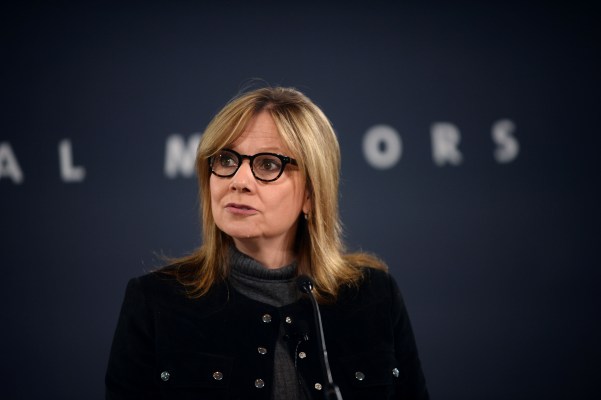GM CEO Mary Barra wants to sell personal autonomous vehicles using Cruise’s self-driving tech by ... - 5 minutes read

GM CEO Mary Barra sees the automaker selling personal autonomous vehicles by the end of the decade by leveraging technology from its self-driving subsidiary Cruise, according to comments made during the company’s Wednesday earnings call.
Barra wasn’t providing any specifics just yet, but instead laid out a vision for the automaker’s future and how its stake in Cruise and its own internal effort to further develop its advanced driver assistance system Super Cruise might evolve over the next nine years.
“I’ve always said we have kind of a revolutionary and an evolutionary strategy around driver assistance all the way to full Level 4, Level 5 autonomy,” she said, referring to automation levels designated by the SAE International.
On the “revolutionary” end of Barra’s vision is Cruise, the self-driving startup in which GM holds a controlling interest. Cruise is working on shared, electric, autonomous vehicles that will operate in dense urban areas and shuttle people and likely packages. The company, which is testing its technology on public roads in San Francisco, has yet to deploy a commercial-scale robotaxi or last-mile delivery business. Cruise also struck a deal earlier this month to launch a robotaxi service in Dubai in 2023.
While Cruise continues to test, validate and presumably launch its self-driving technology as a commercial product, GM continues to improve its hands-free driver assistance system Super Cruise and integrate into more of its vehicle brands. Super Cruise uses a combination of lidar map data, high-precision GPS, cameras and radar sensors, as well as a driver attention system, which monitors the person behind the wheel to ensure they’re paying attention. Unlike Tesla’s Autopilot driver assistance system, users of Super Cruise do not need to have their hands on the wheel. However, their eyes must remain directed straight ahead.
GM has historically taken a slower approach to Super Cruise compared to Tesla’s method of rolling out software updates that gives early access to some owners to test the improved features. Although now, it appears GM is keen to ramp up Super Cruise — in terms of capability and vehicle integration. Barra said Wednesday that GM plans to roll out Super Cruise to 22 models by the end of 2023.
When GM launched Super Cruise in 2017, it was only available in one Cadillac model — the full-size CT6 sedan — and restricted to divided highways. That began to change in 2019 when GM announced plans to expand where Super Cruise would be available. The company has also been ratcheting up the capabilities of Super Cruise. The company’s new digital vehicle intelligence platform known as VIP provides more electrical bandwidth and data processing power, which has allowed engineers to add to features such as automated lane changes. It is also working on making Super Cruise available on city streets, not just on highways.
“So Cruise is really focused on that full autonomy, but on Super Cruise we continue to add more and more features,” Barra said. “Our ultimate vision is that this (Super Cruise) system enables hands-free transportation in 95% of driving scenarios.” Barra added that the company’s “vehicle intelligence platform (VIP), which connects every vehicle system into one advanced high-speed and very secure network” is what makes the further development of Super Cruise possible.
VIP has 4.5 terabytes of data processing power per hour, a five-fold increase from GM’s previous architecture, according to Barra. That’s enough capacity to manage all of the data loads of its driver assistance systems, electric propulsion, over-the-air updates of every vehicle module plus capacity to manage feature applications, Barra said, adding that it also will allow the company to offer software as a service, including new apps that it can market to customers. By the end of 2023, VIP will be on 7 million vehicles and 38 global models, she said.
Ultimately, though Barra wants to take Cruise’s self-driving technology, designed over robotaxis and last-mile delivery, and get it into personal autonomous vehicles.
“There’s a lot to still unfold, but I believe we’ll have personal autonomous vehicles and then that will leverage the capability we have at Cruise with the capability that we have at the car company to really be well positioned to delight the customers from that perspective,” Barra said. “So both paths are very important because the technology we put on vehicles today I think makes them safer and delights the customers and is going to give us an opportunity for subscription revenue, and then the ultimate work that we’re doing at Cruise, that is full autonomous, really opens up, you know, more possibilities then I think we can outline today.”
Integrating into a passenger vehicle a self-driving system used in a robotaxi is a complex process. It would require GM to start now designing, testing and validating how to safely adapt this technology to vehicles consumers can buy. It’s unclear if that is already happening.
GM reported revenue of $32.47 billion in the first quarter, a skosh below the $32.7 billion in the same period last year and less than analysts expected. However, GM far surpassed expectations on earnings, pushing shares up 4% to close at $57.58. The automaker reported net income of $3 billion in the first quarter, up from $294 million in the same period last year. On an EBIT-adjusted earnings basis, which excludes nonrecurring items, it reported income of $4.4 billion and adjusted earnings per share of $2.25. Analysts had expected an adjusted EPS of $1.04.
“We are also reaffirming our guidance for the full year, and based on what we know today, we see results coming in at the higher end of the $10 billion to $11 billion EBIT-adjusted range we shared earlier this year, Barra said in a letter to shareholders, adding to the positive results. Those expectations take into account the potential impact of the ongoing chip shortage, GM said.
Source: TechCrunch
Powered by NewsAPI.org